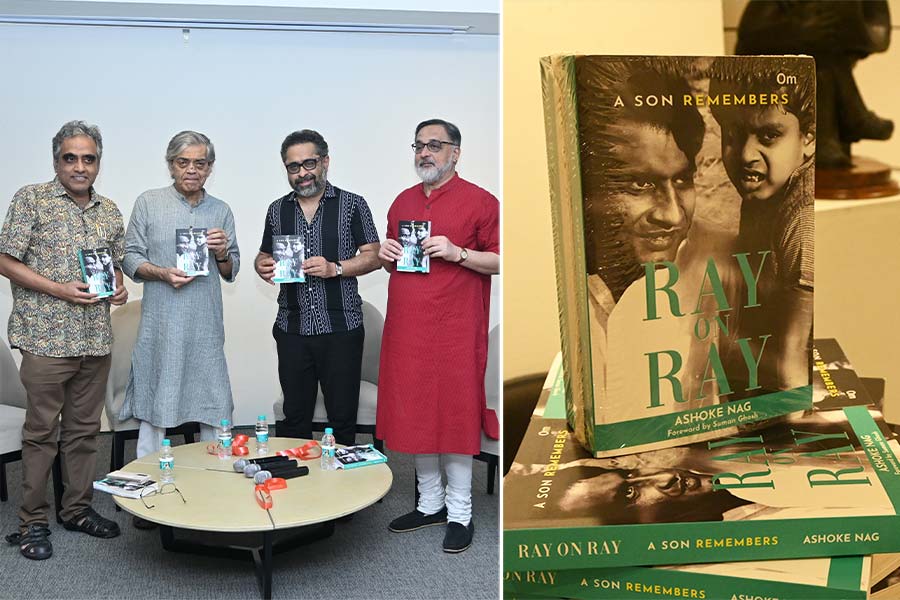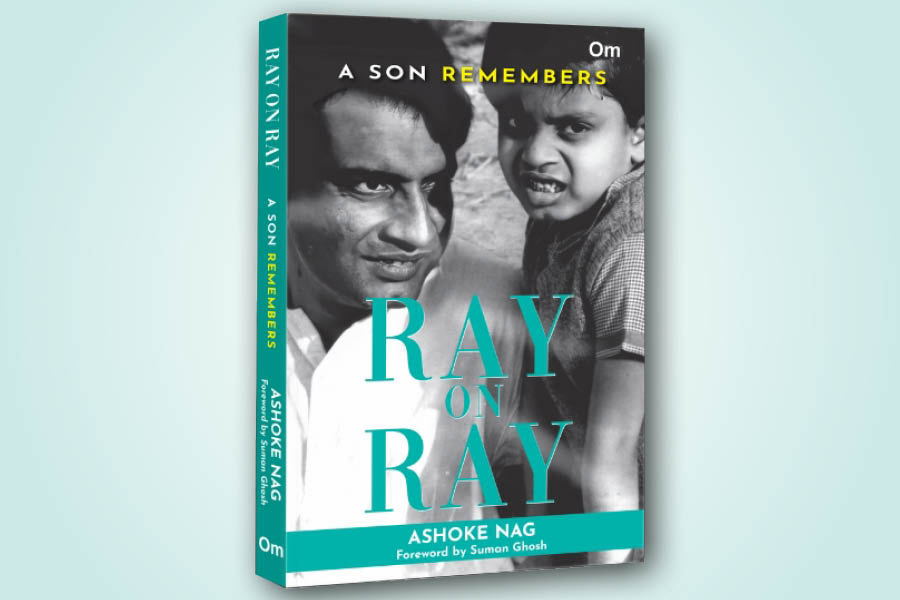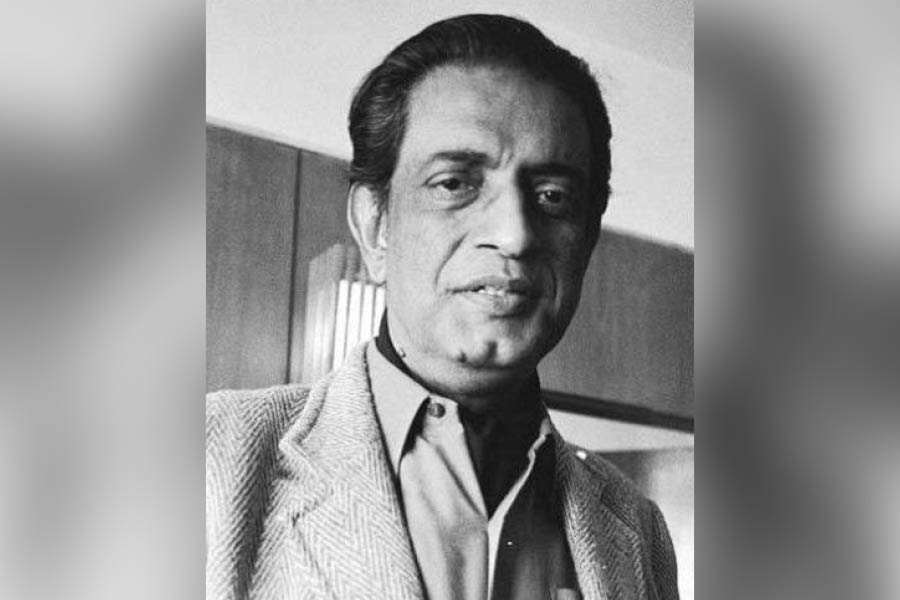Satyajit Ray is one of the most talked about and analysed Bengalis in history, not least on the page. From his filmmaking to his writing, from his sketches to his music direction, what’s left to be said about one of India’s greatest minds of the 20th century? Just ask Sandip Ray, who has a treasure trove of stories to share about his father, a whole host of which have been included in journalist Ashoke Nag’s latest book, Ray on Ray (Om Books International).
The first-ever book to detail and document the perspective of one Ray on another was launched at the Kolkata Centre for Creativity (KCC), in association with Allcap Communications, on July 26, in the presence of Sandip Ray, Nag, filmmaker Suman Ghosh and Shantanu Ray Chaudhuri, the editor of the book as well as editor-in-chief of Om Books International.
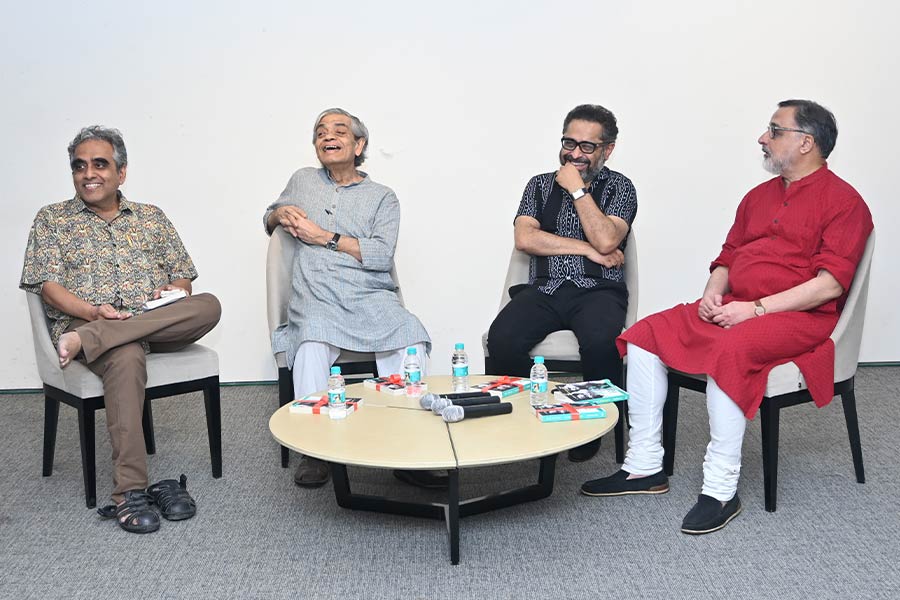
(L-R) Shantanu Ray Chaudhuri, Sandip Ray, Suman Ghosh and Ashoke Nag comprised the panel for the evening
The evening began with a welcome address by the emcee, Sukanya Das. Nag, the author, then took the mic to speak at length about his relationship with the Ray family, whom he got to know because his mother was a school friend of Bijoya Ray, Satyajit’s wife. Nag recalled attending Sandip’s childhood birthdays, which would invariably have “Manikda setting up a screen to show the children photographs and snippets of films”. As a journalist, Nag had written extensively on Satyajit, even covering the entire shooting for Agantuk. When Nag retired in 2014, he decided to dive even deeper into the life of his favourite subject. Sandip agreed and a book proposal was in place. Ten years later, Ray on Ray finally became a reality.
What Satyajit Ray gifted Sharmila Tagore for her wedding

Suman Ghosh acknowledged his debt as a filmmaker to Satyajit Ray
Suman Ghosh, who has written the foreword for the book and described Satyajit as “being part of our collective psyche”, proceeded to share an anecdote: “In keeping with silly questions I often ask famous people, I had once asked Sharmila Tagore if Manikda had attended her wedding. When she said yes, I asked her what he had gifted her. The answer was a film print of Apur Sansar.” To which, Sandip chimed in, “And I was the one who had to carry the print!”, drawing chuckles from the audience.
Ray on Ray has several sections dedicated to Satyajit Ray as an author. For instance, it talks about how Satyajit came up with the story of Khagam. “He wrote so much that he would often suffer from writer’s cramp, when the muscles in his hands would stiffen up… Even then he wouldn’t let me or anyone else do his writing for him. He’d do everything himself,” shared Sandip.
Ray Chaudhuri shifted the discussion to the book’s intriguing cover — a rare photo of father and son taken during the shooting of Apur Sansar in 1959. “Sandip Ray had pulled out the old photo, which was restored for the cover, from his personal collection. This photo had never been seen in public before,” said Nag.
‘My father had amazing time management, not wasting even a second of his day’
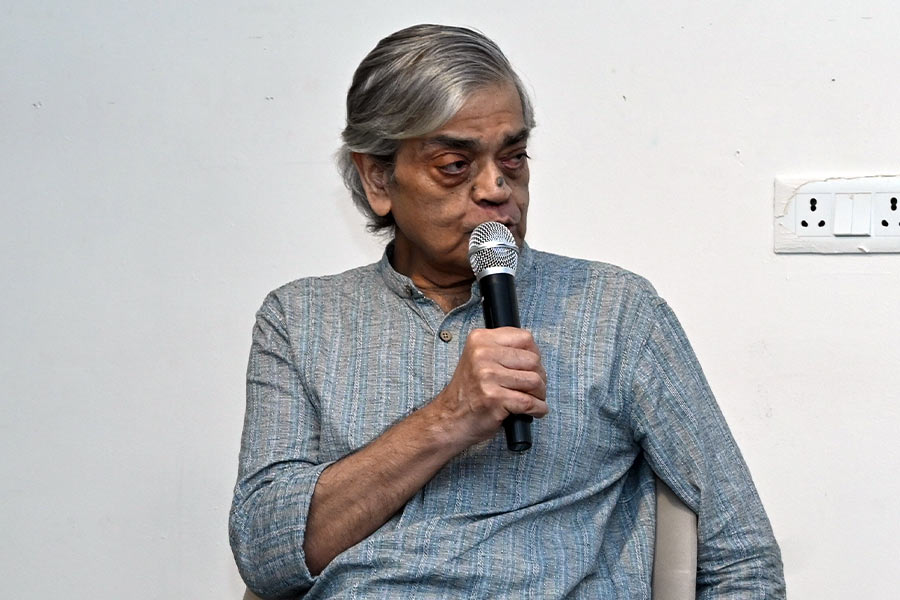
Sandip Ray shared his thoughts on what it means to be Satyajit Ray’s son
The panellists continued sharing their memories and anecdotes about Satyajit, with Sandip regaling the audience with stories of his father writing to and meeting several stalwarts from back in the day, including the likes of Stanley Kubrick and Arthur C. Clarke. A member from the audience added that Salman Rushdie, a massive fan of Sonar Kella, had met Satyajit for an extensive interview in Kolkata and was instrumental in taking Sonar Kella to international audiences.
Sandip explained how his father had “amazing time management, not wasting even a second of his day. He would compartmentalise every hour, even when there were no shoots.” Responding to Ghosh’s question about the impact, perhaps burden, of being Satyajit Ray’s son, Sandip said: “For the most part, I try to stay in a neutral zone, because thinking too much about being his son would make it impossible for me to work.”

Ashoke Nag is hopeful of writing more books on Satyajit Ray, including about his impact on Bengali literature
After Nag had expressed his wish to write more books on Satyajit, especially about “his impact on Bengali literature”, Sandip recalled how his mother would often prevent him from attending shoots as a young boy because of the dangers on set. However, seeing his father in the process of shooting always fascinated Sandip, even when he was too young to understand cinema. During the shooting of Parash Pathar’s iconic party scene, it wasn’t the star cast that left a young Sandip spellbound, but rather the crane on which the camera was mounted. Gradually, what Sandip found most interesting was editing and observing how his father would cut a film down to its essence.
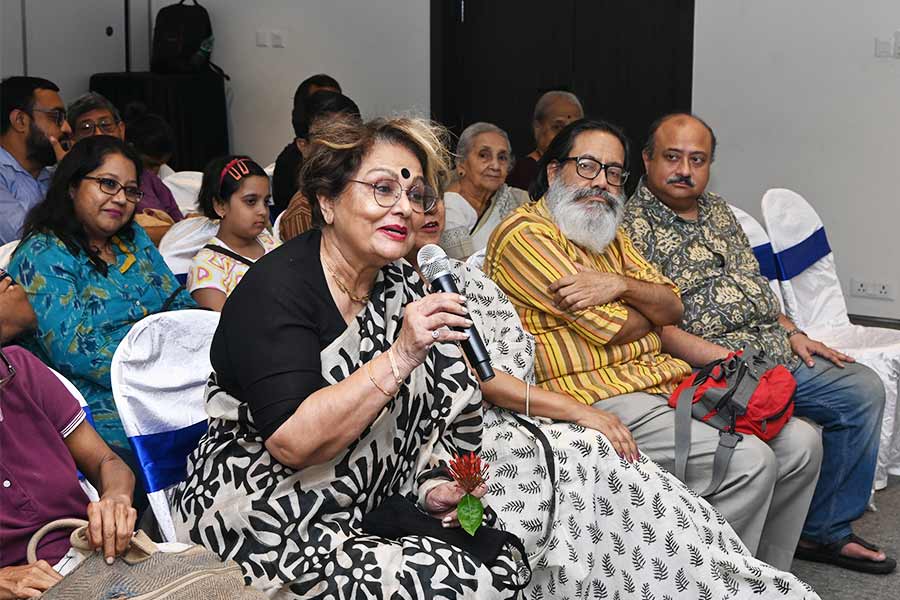
Parmoita Chowdhury, one of Ray’s leading ladies, shared a heartwarming anecdote about the filmmaker
The discussion among the panellists segued into comments and observations from the audience, with one gentleman narrating a “surreal phone call I had with Satyajit Ray when I was a student” and another making a case for a Satyajit Ray museum in Kolkata. Among the audience members was actress Paromita Chowdhury, who played Dolan in Satyajit’s Seemabaddha, and was wearing the same sari at the book launch that Satyajit had taken her to buy for the film.
“Having hosted three significant centenary exhibitions on the life and legacy of Satyajit Ray in 2022, the KCC is once again proud to associate itself with yet another tribute to the legendary filmmaker, author and artist. Ashoke Nag’s book is a lovely reminder of the interpersonal relationships Ray nurtured as a father and human being, outside of his multifaceted professional life. We are honoured to have been a part of this evening of revelations,” shared Richa Agarwal, chairperson, KCC.
Published by Om Books International, Ray on Ray is available at all major bookstores as well as online. You can buy it here.
